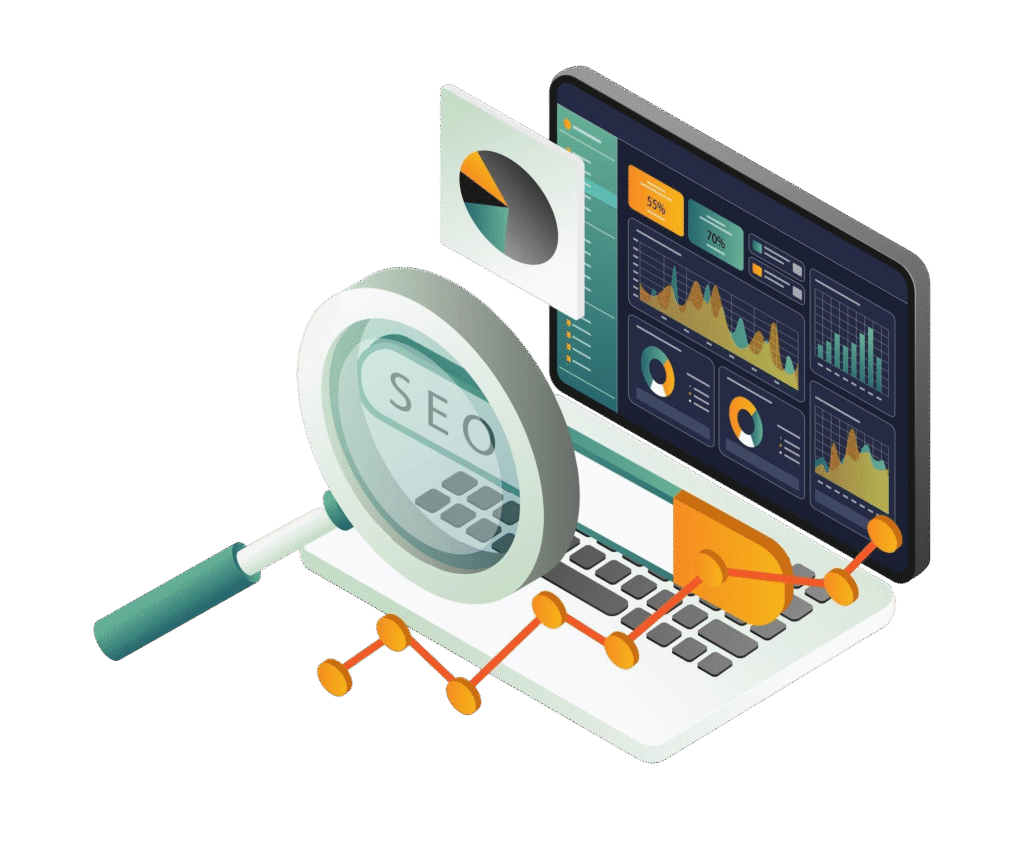Ecommerce Metrics: In the fast-evolving world of ecommerce, success isn’t just about having a good-looking website or running paid ads—it’s about understanding the data behind every click, view, and purchase. Tracking the right ecommerce metrics helps you make informed decisions, optimize performance, and ultimately increase revenue. Whether you’re an online retailer, a website development company, or a digital marketing agency, knowing which metrics truly matter can be a game-changer.

As the best digital marketing agency Hyderabad and a leading best performance marketing agency in India, we’ve curated the 25 most important ecommerce metrics that help turn data into profit.
1. Conversion Rate
This metric measures the percentage of visitors who complete a purchase. A low conversion rate indicates issues with your website experience, pricing, or checkout process. Optimizing it should be your top priority.
2. Average Order Value (AOV)
AOV shows how much customers spend per transaction. Increasing AOV through upselling, cross-selling, or bundle offers can directly boost your revenue without acquiring new customers.
3. Customer Lifetime Value (CLV)
CLV predicts the total revenue a customer generates during their relationship with your brand. The higher your CLV, the more profitable your business becomes in the long run.
4. Cart Abandonment Rate
This metric reveals how many customers add products to their cart but don’t complete checkout. Retargeting campaigns and cart recovery emails (often managed by a digital marketing agency) can help recover lost sales.
5. Customer Acquisition Cost (CAC)
CAC measures how much you spend to acquire a new customer. Keeping CAC lower than your CLV is essential for sustainable growth.
6. Return on Ad Spend (ROAS)
ROAS determines how effectively your advertising generates revenue. The best performance marketing agency in India constantly monitors this metric to ensure ad campaigns deliver profitable results.
7. Website Traffic
Tracking total traffic and its sources—organic, paid, social, referral—helps identify which marketing channels are driving the most value.
8. Organic Traffic
An essential KPI for any Best SEO agency in India, organic traffic shows how well your ecommerce site performs in search engines. More organic visitors usually mean stronger brand authority and higher ROI.
9. Bounce Rate
If visitors leave your website without exploring more pages, your bounce rate is high. This could indicate poor design, irrelevant content, or slow loading times—issues a good website development company can fix.
10. Page Load Time
Slow websites kill sales. Every extra second of loading time can reduce conversions significantly. Optimizing page speed should be a top priority for ecommerce success.
11. Email Open Rate
Email marketing remains one of the most effective sales tools. Open rates reveal how well your subject lines and brand reputation perform in your audience’s inbox.
12. Click-Through Rate (CTR)
CTR helps measure the effectiveness of ads, emails, and social posts. A higher CTR means your message resonates with your target audience.
13. Repeat Purchase Rate
This metric shows how many customers return for additional purchases. Increasing it through loyalty programs or remarketing can substantially grow your profits.
14. Refund and Return Rate
High return rates can eat into your profits and indicate potential product quality or expectation issues.
15. Customer Retention Rate
Keeping existing customers is cheaper than acquiring new ones. Track this to gauge your brand’s customer satisfaction and loyalty levels.
16. Gross Profit Margin
This metric shows how much profit you make after deducting the cost of goods sold. Monitoring it helps maintain healthy pricing strategies.
17. Net Profit Margin
A crucial business health indicator, this shows the percentage of revenue that remains as profit after all expenses.
18. Traffic-to-Lead Ratio
It measures how effectively your website converts visitors into leads. A Best Shopify development company in India can help design conversion-optimized product pages to improve this ratio.
19. Cost Per Click (CPC)
CPC helps evaluate the cost-effectiveness of your paid campaigns. Lower CPC with high conversions means your ads are performing efficiently.
20. Cost Per Conversion
This metric indicates how much it costs to get one paying customer. It’s one of the most vital metrics for paid ad optimization.
21. Revenue Per Visitor (RPV)
RPV combines conversion rate and AOV to show how much each visitor is worth in terms of revenue.
22. Social Media Engagement Rate
Tracking likes, shares, and comments helps you understand which platforms and content types resonate best with your audience.
23. Checkout Abandonment Rate
This focuses specifically on customers who start but don’t complete the checkout process. Simplify your checkout flow to reduce drop-offs.
24. Subscription Rate
For ecommerce stores offering subscriptions, this metric helps evaluate how well your recurring revenue model performs.
25. Churn Rate
Churn measures the rate at which customers stop purchasing from you. Reducing churn directly increases overall profitability.
Conclusion
Ecommerce success depends on tracking, analyzing, and acting on the right data. Each of these 25 ecommerce metrics provides insight into a different part of your business—from customer acquisition to retention.
If you’re looking to turn your ecommerce data into real revenue, partnering with experts is key. A digital marketing agency, especially the best digital marketing agency Hyderabad, can help you analyze data effectively. Meanwhile, the Best SEO agency in India ensures strong organic growth, and the Best Shopify development company in India builds conversion-focused websites that drive sales.
Data is power—and with the right strategy, it’s pure profit.
digital marketing agency, best digital marketing agency hyderabad, best performance marketing agency in india, website development company, Best SEO agency in india, Best Shopify development company In India


